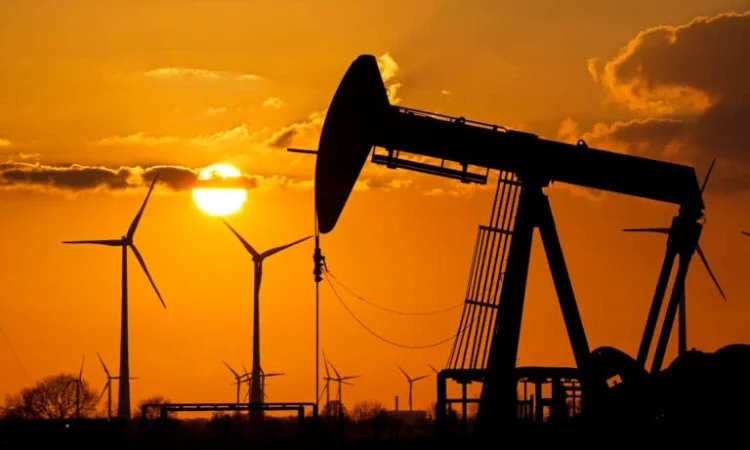The global energy landscape is currently undergoing a seismic shift. The convergence of an escalating energy crisis, driven by geopolitical instability, supply disruptions, and rising demand, alongside rapidly evolving climate policies, is reshaping the future of the energy market. As nations grapple with the immediate challenges posed by energy shortages, inflation, and environmental goals, there is a growing realization that the crisis may serve as both a challenge and an opportunity.
The energy transition, accelerated by climate policies and technological advancements, could herald a new era of sustainable energy sources, but it will also present complex economic and strategic dilemmas. How can businesses and investors navigate this landscape to find new opportunities in an era of both crisis and transformation?
This article explores the dual challenges posed by the current energy crisis and the need for climate action, examining how global markets are responding and where new opportunities could emerge in the coming years.
1. Understanding the Global Energy Crisis
The ongoing energy crisis is multifaceted, arising from a combination of geopolitical events, economic recovery post-COVID-19, and insufficient investments in energy infrastructure.
1.1 Geopolitical Instability and Energy Shortages
In recent years, geopolitical tensions, particularly between major energy-producing and energy-consuming nations, have exacerbated energy supply disruptions. The war in Ukraine, for example, has caused significant fluctuations in the supply of natural gas, oil, and coal, particularly in Europe. As sanctions on Russia intensify and Europe seeks to reduce its dependency on Russian energy, global energy prices have soared, creating inflationary pressures worldwide.
- Gas and Oil Prices: The reduction of natural gas supplies from Russia to Europe has resulted in skyrocketing prices for both gas and oil. As European countries scramble to find alternative sources of energy, the global market has felt the ripple effects.
- Supply Chain Disruptions: The pandemic-induced disruptions in the global supply chain, coupled with the current energy crisis, have led to shortages of key materials required for energy production, such as refined petroleum products and liquefied natural gas (LNG).
1.2 Rising Global Energy Demand
As the world emerges from the COVID-19 pandemic, energy demand has surged. Developing nations, particularly in Asia, are experiencing rapid industrial growth and urbanization, leading to an increased need for energy. At the same time, energy consumption in developed nations is rising as economies recover, further straining the existing supply-demand balance.
- Renewable Energy Growth vs. Fossil Fuels: While there is a significant push for renewables, the world is still heavily reliant on fossil fuels, which are not only subject to price volatility but also continue to contribute to global emissions and environmental degradation.
- Energy Security: For many countries, energy security has become a top priority, meaning they are less willing to depend on global markets or foreign sources of energy. This has led to a reassessment of energy policy priorities, including increased investments in domestic energy production.
2. The Push for Climate Policies and Sustainability Goals
Parallel to the energy crisis is the global momentum toward reducing carbon emissions and addressing climate change. Governments around the world are tightening environmental regulations and pushing forward with ambitious climate policies designed to limit global warming.
2.1 The Paris Agreement and Net-Zero Commitments
In line with the Paris Agreement, nations around the world have committed to achieving net-zero emissions by mid-century. This ambitious goal has placed increasing pressure on industries to transition from fossil fuels to more sustainable energy sources, such as wind, solar, and hydrogen.
- Regulatory Pressure: Governments are tightening regulations on carbon emissions, mandating stricter standards for emissions reductions. This has led to a wave of regulations across sectors such as automotive (electric vehicle adoption), energy (renewable energy mandates), and industrial production (carbon capture and storage).
- Energy Transition: Transitioning from fossil fuels to renewable energy sources is now seen as essential for meeting climate goals. Governments are incentivizing this shift with subsidies, tax incentives, and investment in green technologies.
2.2 Renewable Energy as the Future
Renewable energy sources, particularly solar, wind, and hydropower, are gaining prominence due to their sustainability and lower carbon emissions compared to fossil fuels. As technology improves and costs decrease, renewables are becoming more economically competitive, although challenges in energy storage and grid infrastructure remain.
- Clean Energy Technologies: Technological advancements in areas like battery storage, green hydrogen, and advanced nuclear power are expected to play a significant role in ensuring a stable, low-carbon energy future.
- Electrification of Industries: Several industries are moving toward electrification, with electric vehicles (EVs), energy-efficient appliances, and the decarbonization of manufacturing being key areas of focus. This is driving demand for clean electricity and the associated infrastructure.
2.3 The Energy Transition vs. Energy Security
While the long-term vision for the future of energy is renewable, the current energy crisis is raising questions about the timing of this transition. Some critics argue that countries may need to balance short-term energy security with long-term climate goals. For example, while Europe pushes forward with decarbonization, it has also had to turn to coal and natural gas to meet its energy needs in the short term, potentially undermining its climate commitments.
- Fossil Fuels and Transition Phases: Countries like China and India, which are heavily dependent on coal, may be slower to transition, making energy security concerns a priority over immediate decarbonization.
- Strategic Reserves: The importance of strategic energy reserves, including petroleum and natural gas, has resurfaced as countries seek to secure a steady energy supply.

3. Can New Opportunities Emerge from the Energy Crisis?
Despite the immediate challenges posed by the energy crisis, several key opportunities are emerging for businesses, investors, and governments looking to capitalize on the transformation of the energy market. The crisis is accelerating innovation, investment, and policy shifts, paving the way for a new energy ecosystem.
3.1 Growth in Renewable Energy and Technology Innovation
One of the most obvious opportunities arising from the energy crisis is the growth of the renewable energy sector. As governments worldwide commit to reducing their carbon footprint, investment in solar, wind, battery storage, and green hydrogen is expected to grow rapidly.
- Green Hydrogen: The development of green hydrogen—a clean alternative to natural gas—has gained significant attention, especially for industrial applications and heavy transportation. Companies investing in hydrogen infrastructure and production could see substantial long-term returns.
- Energy Storage: With the intermittent nature of renewable energy, battery storage technology is crucial to ensuring a reliable energy supply. Companies that develop and scale up energy storage solutions will play an essential role in the energy transition.
3.2 Energy Efficiency and Electrification
The push toward greater energy efficiency and electrification represents another area of opportunity. From electric vehicles (EVs) to smart grid technologies, the demand for products and services that reduce energy consumption and carbon emissions is surging.
- Electric Vehicles (EVs): The EV market is one of the fastest-growing sectors within the clean energy ecosystem. With governments setting ambitious targets for EV adoption, manufacturers of electric vehicles, charging infrastructure, and batteries stand to benefit.
- Smart Grid and Demand Response: Smart grid technologies, which optimize electricity distribution and consumption, are critical in managing the increasing demand for clean energy. Demand response solutions that allow businesses and homes to adjust their energy use based on price signals will play a key role in balancing supply and demand.
3.3 Circular Economy and Sustainable Investments
The shift towards sustainability has also given rise to the circular economy, in which resources are used more efficiently, waste is minimized, and products are reused, recycled, or repurposed.
- Sustainable Investing: The demand for Environmental, Social, and Governance (ESG) investing has increased as investors look to back companies that prioritize sustainability. Funds that focus on green energy, sustainable agriculture, and low-carbon technologies are attracting significant capital.
- Resource Efficiency: Companies that adopt resource-efficient practices, such as using recycled materials or reducing waste, can not only lower their environmental impact but also unlock cost-saving opportunities, particularly as raw material prices fluctuate.
3.4 Geopolitical Opportunities and Energy Security
The current energy crisis is prompting a shift in geopolitical dynamics. Countries are rethinking their energy policies and strategies, leading to new opportunities for energy trade and investment in diverse regions.
- Diversification of Energy Supply: The global push to diversify energy sources offers investment opportunities in emerging energy markets. For example, African countries are increasingly seen as potential suppliers of natural gas and renewables, offering opportunities for energy infrastructure projects and partnerships.
- Energy Infrastructure: In regions like Europe, where energy security is a growing concern, investments in LNG terminals, smart grids, and energy storage facilities could yield strong returns.
4. Conclusion: The Future of Global Energy Markets
The global energy crisis, coupled with the rapid acceleration of climate policies, presents a unique set of challenges and opportunities. While the energy market is experiencing significant disruption, the transition to cleaner, more sustainable energy sources offers long-term potential for innovation, investment, and growth.
For businesses and investors, success will depend on their ability to navigate the complexities of this transformation. By focusing on sectors such as renewable energy, energy efficiency, electrification, and sustainable investing, companies can position themselves to not only survive the crisis but also thrive in a future shaped by climate action and technological innovation.
Ultimately, the global energy landscape is in flux, but within this uncertainty lies the potential for profound change. For those willing to embrace new technologies, business models, and investment strategies, the coming decades may offer some of the most lucrative opportunities in the history of the energy sector.


















































